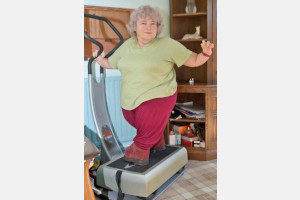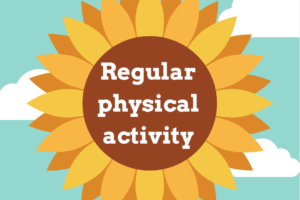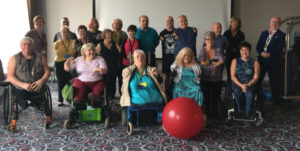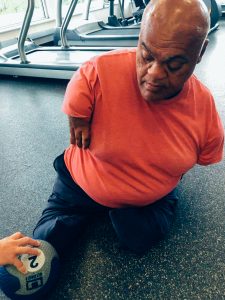Being Active
Being active is essential to improving our physical and emotional wellbeing. It plays a significant part in improving our quality of life.
Although having any form of disability may present barriers to physical activity, there are a number of organisations that can provide advice and support in helping you find something that works for you.
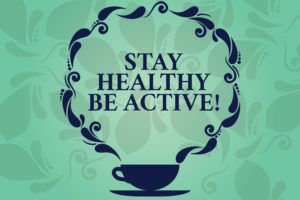
Why be active?
Physical activity (exercise) is an effective intervention for just about every medical condition – it is the closest thing the medical profession has to a panacea and is listed as an evidence based prevention or treatment in 39 UK national guidelines. Being inactive is a significant predictor of cardiovascular disease, type 2 diabetes, obesity, some cancers, poor skeletal health, some aspects of mental health, and overall mortality, as well as poor quality of life.
Men and women of all ages, socioeconomic groups, and ethnicities are healthier if they achieve the public health recommendation of at least 150 min per week of moderate-intensity aerobic physical activity
Being physically active is not just about sport and exercise, it is about using the body we have in the way it was designed – to move often and in ways that exert ourselves regularly and at every opportunity – at work, at home, while travelling an in our leisure time.
Being physically active is not just about weight loss either, being more active is a major contributor to overall physical and mental wellbeing. Positive outcomes of being more active include a sense of purpose and value, a better quality of life, improved sleep, and reduced stress, as well as stronger relationships and social connectedness.
Recognising the challenges
People with disabilities are much greater risk of the serious health problems associated with physical inactivity. We recognise that there are many barriers that get in the way of starting and maintaining regular physical activity, including;
- pain
- lack of energy
- self-consciousness about exercising in public
- the perception that exercise is too difficult
- lack of accessible exercise equipment
- unqualified staff who cannot modify or adapt individual and group exercise classes for people with disabilities
- programme and equipment costs
- discriminatory practices at fitness centres and other recreational venues.
Further information
Our Fit For The Future events are a great way to get together with other beneficiaries to get motivated and try being active in a safe supportive environment. Take a look at the videos and information from previous events to find out more using the link below.
Pilates is a popular form of activity for beneficiaries and helps with pain and mobility. We have produced some videos to demonstrate the benefits. Use the button below to find out more.
Share your experiences with other beneficiaries
We are keen to hear your stories about how you manage to stay active, or the problems you face. Please let us know here:
Acknowledgments - The Lancet article - Rethinking our approach to physical activity
